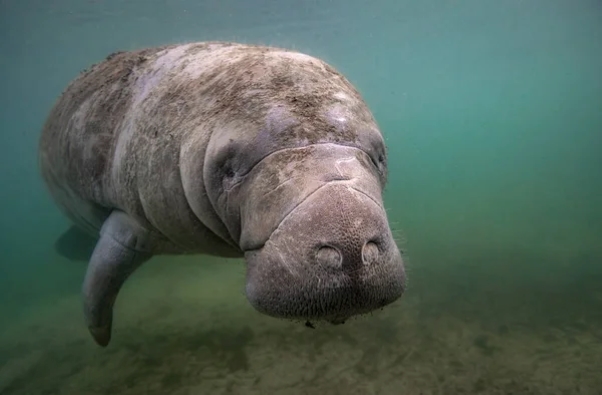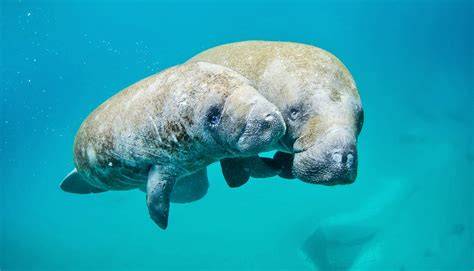Tanzania still has 100 Sea Cows in the Indian Ocean, but they are about to become extinct
They may have gone extinct in most parts of the world, but Tanzania still has 100 sea cows but according to marine experts, the Sirenians in the Indian Ocean are also about to disappear for good.
Climate Change, destruction of Marine ecosystems, increasing human activities and dwindling underwater vegetation are being described to be the main reasons behind the creatures being driven extinct.
Making a presentation on ‘Marine and Coastal Ecosystem Conservation and Resilience, the Senior Lecturer and the Dean of the School of Aquatic Sciences and Fisheries Technology at the University of Dar es salaam (UDSM), Dr Blandina Lugendo, told journalists that the seas and the animals living in them, are also suffering the negative effects of climate change.
She was presenting a paper during the special training workshop on Blue Economy organized by the International Union for Conservation of Nature (IUCN), for writers and reporters who are members of the Journalists Environmental Association of Tanzania (JET) who had gathered in Tanga.
Dr Lugendo, together with the Senior Research Dean at the Tanzania Fisheries Research Institute (TAFIRI), Rushingisha George, revealed that ocean acidification is currently affecting the seas, including coastal estuaries and waterways and as the result, marine creatures are being threatened.
“Change in water chemistry, precisely ocean acidification has adverse effects on the underwater vegetation, such as sea grass, seaweeds and coral reefs, reducing food supplies to the marine herbivores,” the experts pointed out.
Sea Cows, also known as the sirenians, or Manatees and as ‘Nguva’ in Kiswahili, are fully aquatic, herbivorous mammals that inhabit swamps, rivers, estuaries, marine wetlands, and coastal marine waters, that are now bidding the earth farewell.
But now increase in acidity is making oceans to become harsher.

In Tanzania, the Sea Cows during their peak, were mostly found along the Indian Ocean shorelines, but according to experts their numbers have dropped down to just 100 animals, rendering them to be highly threatened and on the brink of extinction.
Elsewhere in the world, Sea Cows, known locally here as ‘Nguva,’ are being classified as extinct.
But it has been discovered that Tanzania still has 100 of the Nguvas swimming in the warm sea waters.
“The last time a Nguva (Sea Cow) was seen around here it was in 1994,” recalls the Mkinga District Fisheries Officer, Ezra Katete, explaining that the giant aquatic mammal had been captured by a fisherman of Kichalikani Village, in Moa Ward of Tanga Region.
“But even then, we suspected that the Sea Cow could have been caught on the Kenyan side of the Indian Ocean,” pointed out Ezra Katete, adding that the animals have been rarely seen and as far as they are concerned, they must have disappeared.

